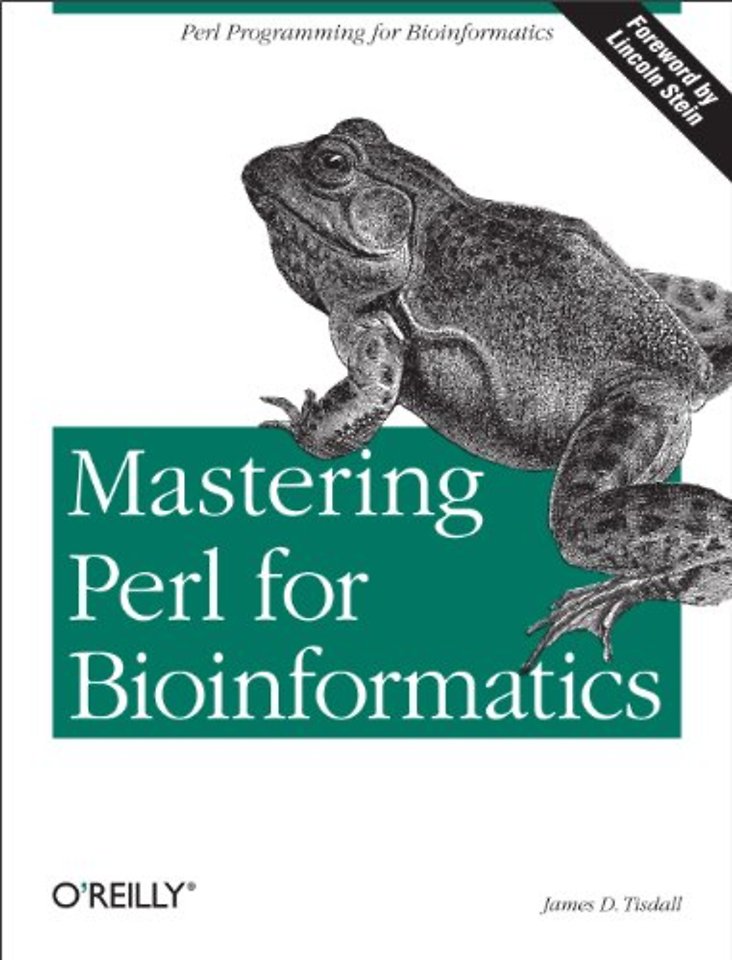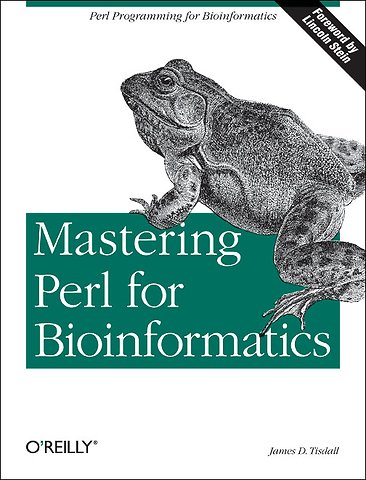


James Tisdall has worked as a musician, a programmer at Bell Labs (where he programmed for speech research and discovered a formal language for musical rhythm), and as a bioinformaticist at Mercator Genetics in Menlo Park, California, and at Fox Chase Cancer Center in Philadelphia.
Meer over James TisdallMastering Perl for Bioinformatics
Samenvatting
Historically, programming hasn't been considered a critical skill for biologists. But now, with access to vast amounts of biological data contained in public databases, programming skills are increasingly in strong demand in biology research and development. Perl, with its highly developed capacities in string handling, text processing, networking, and rapid prototyping, has emerged as the programming language of choice for biological data analysis.
'Mastering Perl for Bioinformatics' covers the core Perl language and many of its module extensions, presenting them in the context of biological data and problems of pressing interest to the biological community. This book, along with Beginning Perl for Bioinformatics, forms a basic course in Perl programming. This second volume finishes the basic Perl tutorial material (references, complex data structures, object-oriented programming, use of modules-all presented in a biological context) and presents some advanced topics of considerable interest in bioinformatics.
The range of topics covered in Mastering Perl for Bioinformatics prepares the reader for enduring and emerging developments in critical areas of bioinformatics programming such as:
- Gene finding
- String alignment
- Methods of data storage and retrieval (SML and databases)
- Modeling of networks (graphs and Petri nets)
- Graphics (Tk)
- Parallelization
- Interfacing with other programming languages
- Statistics (PDL)
- Protein structure determination
- Biological models of computation (DNA Computers)
Biologists and computer scientists who have conquered the basics of Perl and are ready to move even further in their mastery of this versatile language will appreciate the author's well-balanced approach to applying Perl's analytical abilities to the field of bioinformatics. Full of practical examples and real-world biological problem solving, this book is a must for any reader wanting to move beyond beginner level Perl in bioinformatics
Specificaties
Inhoudsopgave
Preface
Part I. Object-Oriented Programming in Perl
1. Modular Programming with Perl
What Is a Module?
Why Perl Modules?
Namespaces
Packages
Defining Modules
Storing Modules
Writing Your First Perl Module
Using Modules
CPAN Modules
Exercises
2. Data Structures and String Algorithms
Basic Perl Data Types
References
Matrices
Complex Data Structures
Printing Complex Data Structures
Data Structures in Action
Dynamic Programming
Approximate String Matching
Resources
Exercises
3. Object-Oriented Programming in Perl
What Is Object-Oriented Programming?
Using Perl Classes (Without Writing Them)
Objects, Methods, and Classes in Perl
Arrow Notation (->)
Gene1: An Example of a Perl Class
Details of the Gene1 Class
Gene2.pm: A Second Example of a Perl Class
Gene3.pm: A Third Example of a Perl Class
How AUTOLOAD Works
Cleaning Up Unused Objects with DESTROY
Gene.pm: A Fourth Example of a Perl Class
How to Document a Perl Class with POD
Additional Topics
Resources
Exercises
4. Sequence Formats and Inheritance
Inheritance
FileIO.pm: A Class to Read and Write Files
SeqFileIO.pm: Sequence File Formats
Resources
Exercises
5. A Class for Restriction Enzymes
Envisioning an Object
Rebase.pm: A Class Module
Restriction.pm: Finding Recognition Sites
Drawing Restriction Maps
Resources
Exercises
Part II. Perl and Bioinformatics
6. Perl and Relational Databases
One Perl, Many Databases
Popular Relational Databases
Relational Database Definitions
Structured Query Language
Administering Your Database
Relational Database Design
Perl DBI and DBD Interface Modules
A Rebase Database Implementation
Additional Topics
Resources
Exercises
7. Perl and the Web
How the Web Works
Web Servers and Browsers
The Common Gateway Interface
Rebase: Building Dynamic Web Pages
Exercises
8. Perl and Graphics
Computer Graphics
GD
Adding GD Graphics to Restrictionmap.pm
Making Graphs
Resources
Exercises
9. Introduction to Bioperl
The Growth of Bioperl
Installing Bioperl
Testing Bioperl
Bioperl Problems
Overview of Objects
bptutorial.pl
bptutorial.pl: sequence_manipulation Demo
Using Bioperl Modules
Part III. Appendixes
A. Perl Summary
B. Installing Perl
Index
Anderen die dit boek kochten, kochten ook
Net verschenen
Rubrieken
- aanbestedingsrecht
- aansprakelijkheids- en verzekeringsrecht
- accountancy
- algemeen juridisch
- arbeidsrecht
- bank- en effectenrecht
- bestuursrecht
- bouwrecht
- burgerlijk recht en procesrecht
- europees-internationaal recht
- fiscaal recht
- gezondheidsrecht
- insolventierecht
- intellectuele eigendom en ict-recht
- management
- mens en maatschappij
- milieu- en omgevingsrecht
- notarieel recht
- ondernemingsrecht
- pensioenrecht
- personen- en familierecht
- sociale zekerheidsrecht
- staatsrecht
- strafrecht en criminologie
- vastgoed- en huurrecht
- vreemdelingenrecht





